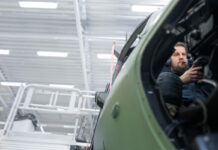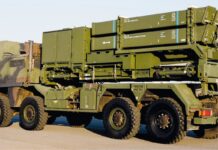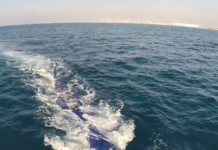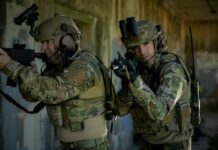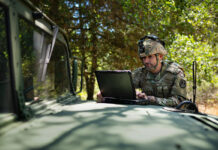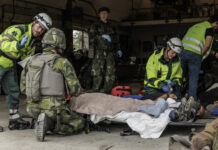Years prior to the February 2022 invasion by Russian forces, the Armed Forces of Ukraine understood the value of using technology for maneuvering and fighting at night or during periods of limited visibility. Similar to U.S. Defense forces, they viewed night fighting solutions as “critical enabling technology”. While soldier system night fighting equipment were readily deployed, a gap existed with combat and combat support vehicles, specifically for allowing drivers to maneuver safely while maintaining tactical operational speed.
The search in 2018 for a viable solution in led to ATRI UAB, headquartered in Vilnius, Lithuania. ATRI has a background in thermal imaging solutions for both defense and security applications. Additionally, the team at ATRI had previous experience with projects in the Ukraine. This technical expertise combined with customer familiarity provided for the delivery, installation and training of the first ATRI TINDS DVE systems to Ukraine in 2019. After significant technical evaluations and field trials, the ATRI TINDS was officially approved for acceptance for the armament of the Armed Forces of Ukraine by the Ministry of Defence Ukraine in April 2020.
The ATRI TINDS stands for Thermal Imaging Night Driving System and has been deployed to multiple countries around the world. But none have been as critical and important as the units provided to Ukraine. A thermal DVE system increases the service life of armored vehicles in modern combat operations by providing the driver with advanced thermal imaging capabilities. This allows the driver to detect and identify potential threats, such as enemy vehicles or concealed troops, even in low visibility conditions such as darkness or smoke. It solves the problem of traveling safely at operational speeds, providing a distinct advantage at night.

In the war in Ukraine, armored vehicles have been used extensively in both urban and rural environments. The ATRI TINDS DVE system has been particularly useful in urban areas where visibility is often limited by buildings and other structures. The thermal imaging capabilities of the system allows drivers to detect and identify potential threats, even in the dark or smoke-filled streets. In rural areas where visibility is often limited by trees and other vegetation, the thermal imaging capabilities provide an advantage even in the dense forestsmor open fields of Ukraine.
The ease of use, effectiveness and combat advantages afforded by the ATRI TINDS resulted in additional requests and delivery of units since the Russian invasion. The commitment and delivery of numerous armored and security vehicles ranging from U.S. made M113 APCs, M117 ASVs, HMMWVs to Soviet made BMPs poses an inter-operability challenge nfor the users. However, the flexibility and ease of installation affords ATRI the ability to install and train users on a variety of platforms.
Due to growth and with the signing of the LT-US Reciprocal Defense Procurement Agreement between the U.S. and Lithuania in December 2021, ATRI opened up their U.S. offices in 2022. Now, in addition to providing flexibility for differing vehicle platforms, ATRI can support installations in multiple geographic locations… United States, Lithuania, other European countries or even in the Ukraine if needed.
The information provided has focused on ATRI’s involvement in supporting Ukraine since 2018 and the benefits associated with a combat-proven DVE solutions. A technical overview of the TINDS is based around three models offered as ATIC Series, ADSC-90 Series and ADSC-180 Series. While the ATIC is equipped with only a thermal imager, the ADSC-90 is a dual spectrum camera combining the benefits of both a thermal imaginer and low-light day camera with IR-illuminator in one housing. In both configurations, a single imager is used offering a wide field of view of 90o at a cost-effective price. Technical details associated with the ATRI TINDS can be found on our website (www.atri.lt or www.atri-usa.com).
More information:








